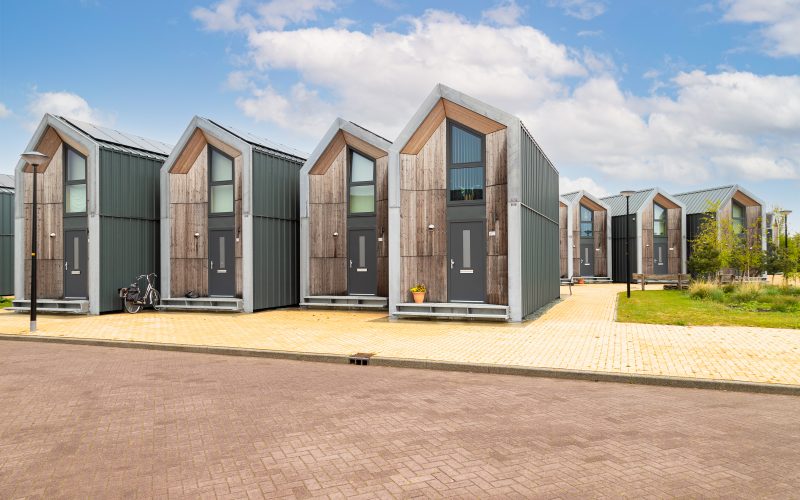In order to disrupt the cycle of homelessness, some nonprofits are offering tiny homes as a temporary solution. Rachel Cohen covers domestic social policy for Vox. She joins host Krys Boyd to discuss how tiny homes serve the “housing first” idea – and to talk about if these dwellings are just putting a band aid on the issue. Her article is “The big bet on ‘tiny homes’ to fix homelessness.”
The logistics of tiny home communities
By Shaunessy Renker, Think Intern
According to the National Alliance to End Homelessness, 40 percent of people experiencing homelessness are unsheltered, meaning they sleep somewhere not designed for human residence, such as a train station or park bench. “Housing-first” solutions come from the idea that people who are unhoused need a place to live, first and foremost. Providing shelter takes priority over other things people who are homeless are in desperate need of, such as mental health treatment and job training.
Across the country, some cities are implementing communities of small shelters for people who lack housing. These are tiny homes a fraction of the size of a traditional tiny home on the consumer market.
“These are approximately the size of a studio bedroom,” says Rachel Cohen, author of “The big bet on ‘tiny homes’ to fix homelessness.” “[They are] 60-120 square feet with very few amenities and space, but they have more privacy than a traditional shelter and that’s kind of how they’re being conceptualized.”
While these tiny homes are much smaller, dozens of these shelters require quite a few acres of land. So how do municipalities solve this problem and allow the space for tiny home neighborhoods without the overwhelming cost?
“Some cities are declaring ‘state of emergency’ around the homelessness crisis which allows them to use building codes—the kind that FEMA might use,” Cohen says. “So, some cities are trying to lower the barrier to building by leveraging these emergency codes.”
Because this proposed solution is so new, many cities are still deep in the process of ironing out the logistics for land use. Advocates hope the tiny home communities are just a temporary aid for those who experience homelessness until they can find stable housing. Because of this, tiny home allies are encouraging cities to borrow land from owners who are not currently using their land.
“So, we can kind of bounce these structures around every 2 to 5 years depending on what [land] is available,” says Cohen. “That’s a way we can build this housing and not deal with the expensive cost of land…and even the person who owns the land might get a tax break from making this kind of trade.”
The idea surrounding tiny home communities is a novel one, and it continues to raise many questions. There is concern about the quality of the shelters and what amenities are included as well as whether people who are unhoused would accept the offer of a tiny home.
“There has not really been a clear answer to that,” says Cohen. “But there is definitely a sense among homeless advocates and the people pushing this legal strategy themselves that building tiny houses and giving cities the legal authority to clear tent encampments go hand-in-hand.”




